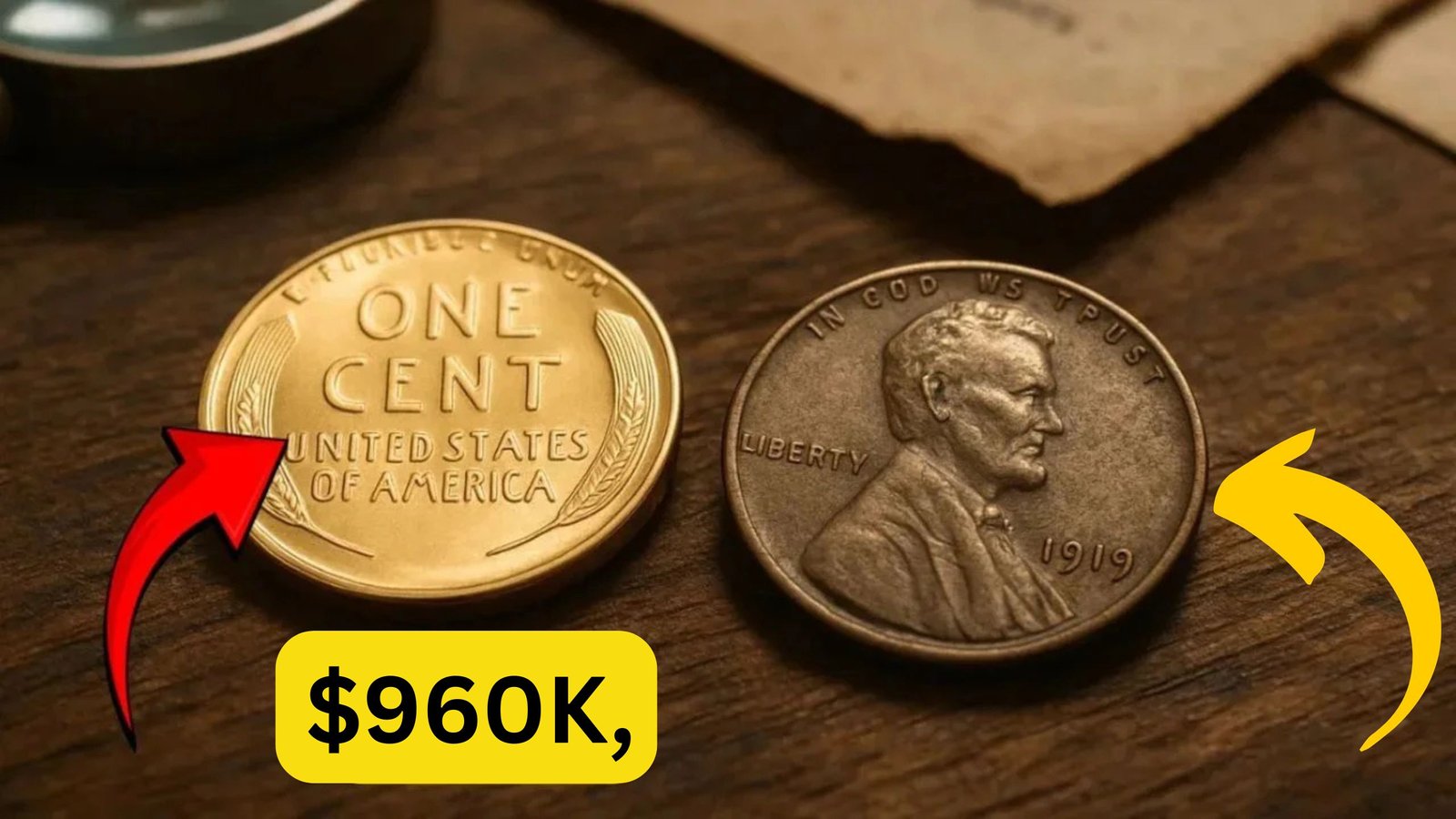The Lincoln Wheat Penny has fascinated collectors for over a century, but one particular version of this coin has reached legendary status. Valued at an astounding $960,000, this rare penny has been reported as still possibly existing in circulation. This makes the Lincoln Wheat Penny not only a piece of American history but also a potential hidden fortune waiting to be discovered.
The History of the Lincoln Wheat Penny
This heading refers to when and why the Lincoln Wheat Penny was first created. The coin was introduced in 1909 to mark the 100th anniversary of President Abraham Lincoln’s birth. Designed by Victor David Brenner, it was the first U.S. coin to feature a real person. The front shows Lincoln’s profile, while the back features two wheat stalks—hence the name “Wheat Penny.” Minted until 1958, it represents a long chapter of American coinage history.
What Makes Some Wheat Pennies Worth Nearly $1 Million
This section explains why a coin worth only one cent could be valued at $960,000. Most wheat pennies are common, but some rare issues were minted in very small numbers, or they were struck with errors that make them unique. Coins with special mint marks, unusual metal compositions, or low surviving populations become highly desirable. The rare wheat penny valued at $960K falls into this category because of its scarcity, flawless condition, and immense collector demand.
How Rare Pennies Can Still Be in Circulation
This heading emphasizes the surprising fact that such a valuable coin could still appear in everyday change. Since wheat pennies were produced in the millions and circulated for decades, many were tucked into jars, drawers, or inherited collections. A few rare specimens may not yet have been discovered by collectors. This means the possibility, however slim, that someone could stumble upon a fortune in their pocket change or coin jar remains real.
The Importance of Condition and Grading
This section explains why a penny’s condition matters so much. Coins are graded based on how much wear and tear they show. A heavily worn wheat penny may only be worth a few cents, even from a rare year. But an uncirculated or mint-state example with sharp details and bright luster can command sky-high prices. The Lincoln Wheat Penny valued at $960K is believed to be in pristine condition, making it exceptionally rare and valuable.
Why Collectors Are Drawn to Wheat Pennies
This heading shows why these coins remain popular. Wheat pennies are nostalgic, affordable to start collecting, and yet have the potential to hold hidden treasures. Their historic connection to Lincoln, their variety of dates and mint marks, and the thrill of possibly finding a rare coin keep collectors engaged. Even beginners often start with wheat pennies because they are accessible, but for serious collectors, they represent one of the most iconic U.S. coin series.
Frequently Asked Questions (The Lincoln Wheat Penny Valued at $960K)
Q1: Which Lincoln Wheat Penny is worth $960,000?
The most valuable examples are extremely rare varieties such as the 1943 copper penny or the 1944 steel penny. Depending on condition, these coins can sell for hundreds of thousands to nearly a million dollars.
Q2: How can I tell if my wheat penny is valuable?
Check the year, mint mark, and condition. Rare years like 1909-S VDB, 1914-D, 1943 copper, and 1944 steel are especially valuable. Having the coin graded by a professional service can confirm authenticity and value.
Q3: Are all wheat pennies worth more than face value?
No. Many common wheat pennies from the 1940s and 1950s are only worth one to ten cents. Only rare dates, mint errors, or well-preserved examples hold significant value.
Q4: Could I really find a $960K penny in circulation?
It is unlikely, but technically possible. Some rare wheat pennies may still be hiding in collections or change, which is why collectors always check carefully.
Q5: Should I clean my wheat pennies before selling them?
No. Cleaning a coin can damage its surface and significantly reduce its value. Collectors prefer coins in their natural, unaltered condition.




